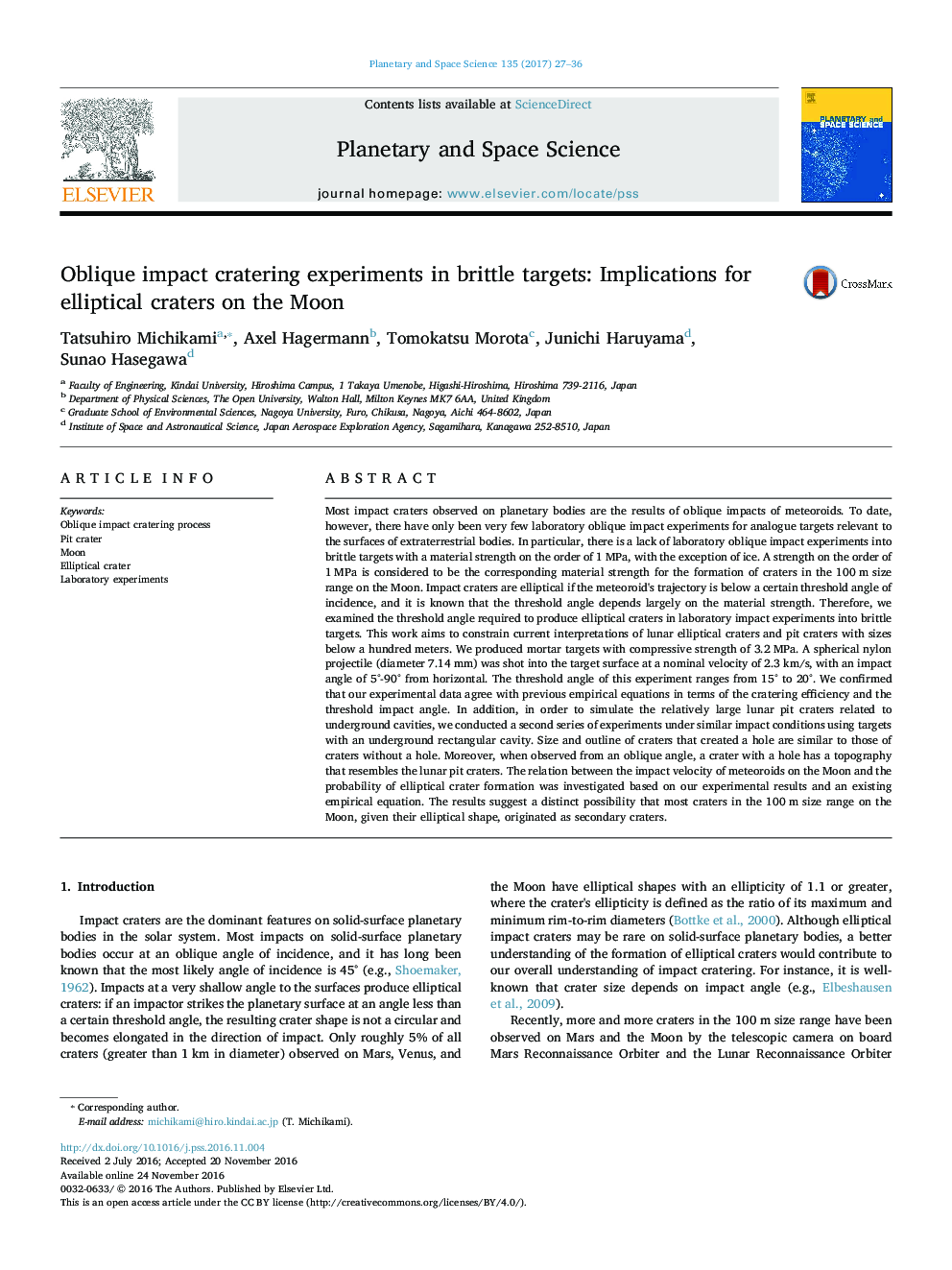| کد مقاله | کد نشریه | سال انتشار | مقاله انگلیسی | نسخه تمام متن |
|---|---|---|---|---|
| 5488018 | 1523905 | 2017 | 10 صفحه PDF | دانلود رایگان |
عنوان انگلیسی مقاله ISI
Oblique impact cratering experiments in brittle targets: Implications for elliptical craters on the Moon
ترجمه فارسی عنوان
آزمایشات اثر کراکرهای برافراشته در اهداف شکننده: تاثیرات بر روی نهرهای بیضوی در ماه
دانلود مقاله + سفارش ترجمه
دانلود مقاله ISI انگلیسی
رایگان برای ایرانیان
موضوعات مرتبط
مهندسی و علوم پایه
علوم زمین و سیارات
فیزیک زمین (ژئو فیزیک)
چکیده انگلیسی
Most impact craters observed on planetary bodies are the results of oblique impacts of meteoroids. To date, however, there have only been very few laboratory oblique impact experiments for analogue targets relevant to the surfaces of extraterrestrial bodies. In particular, there is a lack of laboratory oblique impact experiments into brittle targets with a material strength on the order of 1 MPa, with the exception of ice. A strength on the order of 1 MPa is considered to be the corresponding material strength for the formation of craters in the 100 m size range on the Moon. Impact craters are elliptical if the meteoroid's trajectory is below a certain threshold angle of incidence, and it is known that the threshold angle depends largely on the material strength. Therefore, we examined the threshold angle required to produce elliptical craters in laboratory impact experiments into brittle targets. This work aims to constrain current interpretations of lunar elliptical craters and pit craters with sizes below a hundred meters. We produced mortar targets with compressive strength of 3.2 MPa. A spherical nylon projectile (diameter 7.14 mm) was shot into the target surface at a nominal velocity of 2.3 km/s, with an impact angle of 5°â90° from horizontal. The threshold angle of this experiment ranges from 15° to 20°. We confirmed that our experimental data agree with previous empirical equations in terms of the cratering efficiency and the threshold impact angle. In addition, in order to simulate the relatively large lunar pit craters related to underground cavities, we conducted a second series of experiments under similar impact conditions using targets with an underground rectangular cavity. Size and outline of craters that created a hole are similar to those of craters without a hole. Moreover, when observed from an oblique angle, a crater with a hole has a topography that resembles the lunar pit craters. The relation between the impact velocity of meteoroids on the Moon and the probability of elliptical crater formation was investigated based on our experimental results and an existing empirical equation. The results suggest a distinct possibility that most craters in the 100 m size range on the Moon, given their elliptical shape, originated as secondary craters.
ناشر
Database: Elsevier - ScienceDirect (ساینس دایرکت)
Journal: Planetary and Space Science - Volume 135, January 2017, Pages 27-36
Journal: Planetary and Space Science - Volume 135, January 2017, Pages 27-36
نویسندگان
Tatsuhiro Michikami, Axel Hagermann, Tomokatsu Morota, Junichi Haruyama, Sunao Hasegawa,
